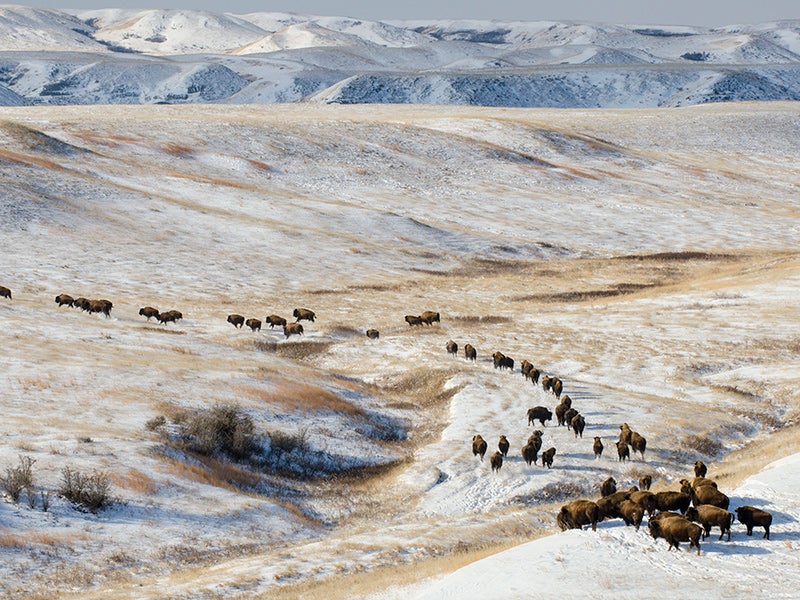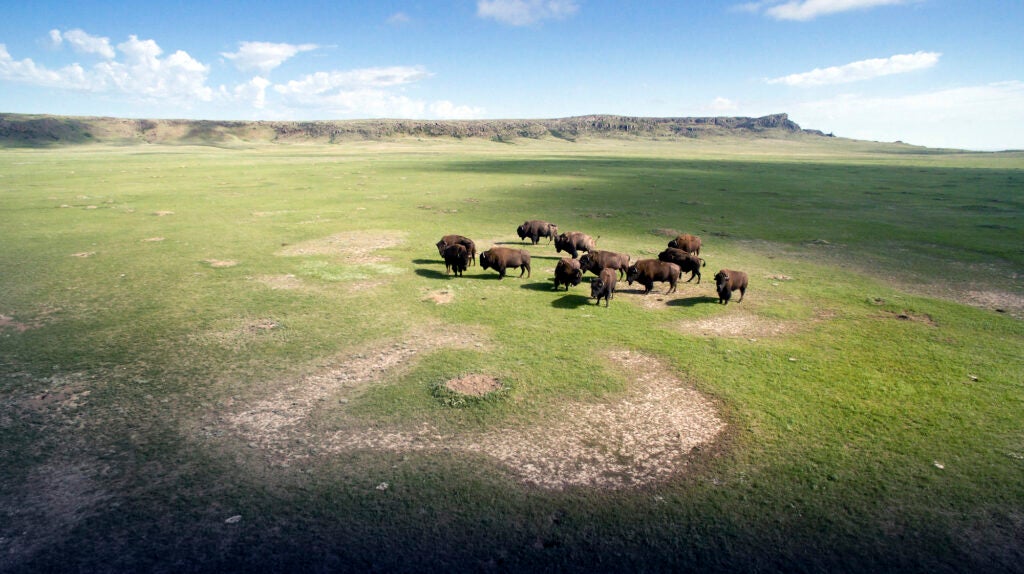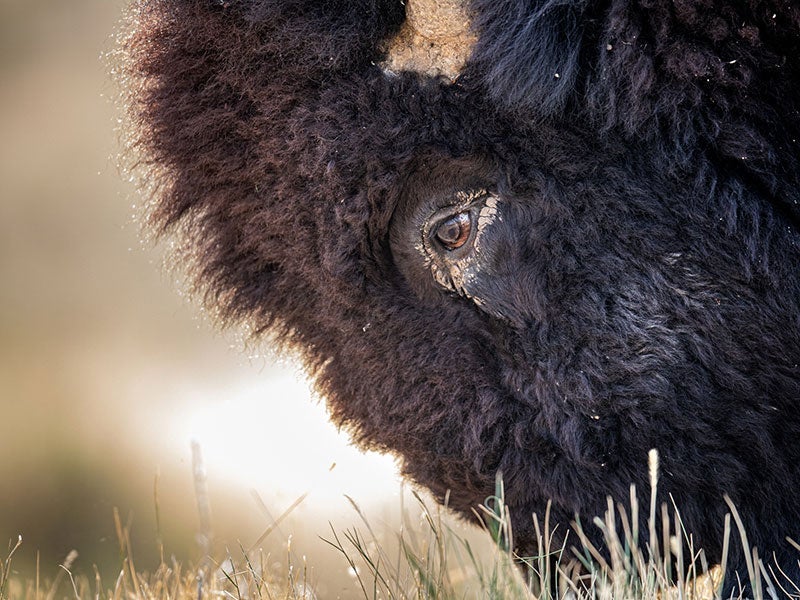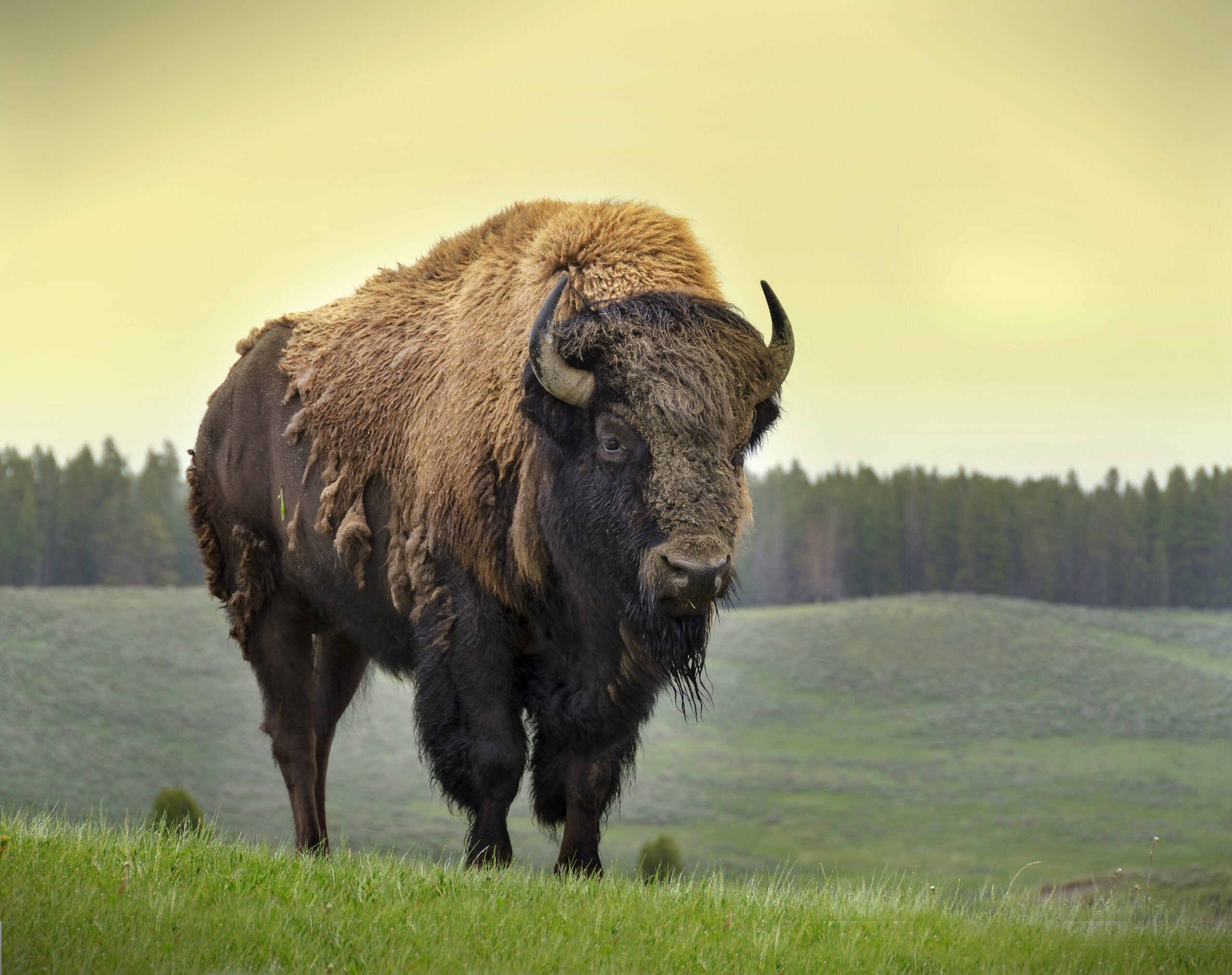Bison: Born to be Wild
Once numbering approximately 30 million across the Great Plains and Rocky Mountains, wild bison were almost driven to extinction by market hunters in the late 19th century. In addition to its importance for wildlife conservation and restoration, the return of wild bison to reservation lands has tremendous cultural significance for Native American people.
Clients
Regional Office / Program
Case Overview
Once numbering approximately 30 million across the Great Plains and Rocky Mountains, wild bison were almost driven to extinction by market hunters in the late 19th century. Montana was among their last strongholds, but the slaughter persisted until in 1903, when only about 25 of the animals remained in the wild. Those last wild bison were located in the Pelican Valley of Yellowstone National Park. Since then, Yellowstone’s wild bison population has rebounded to more than 4,000 and Montana officials have developed plans to transplant some bison from the park to the species’ historic home on the plains.
Earthjustice, representing Defenders of Wildlife and the National Wildlife Federation, asked the Montana Supreme Court to allow state wildlife officials to move ahead with a plan to transfer to north-central Montana’s Fort Belknap Reservation approximately 30 wild bison originally moved from Yellowstone National Park.
To that end, the Montana Department of Fish, Wildlife and Parks in March 2012 released 61 bison for transfer to northeast Montana’s Fort Peck Indian Reservation. That contingent included animals destined for further transfer to Fort Belknap, and those bison have remained in the custody of the Fort Peck Tribes during the state court proceedings.

Case Updates
Case page created on October 16, 2013.


